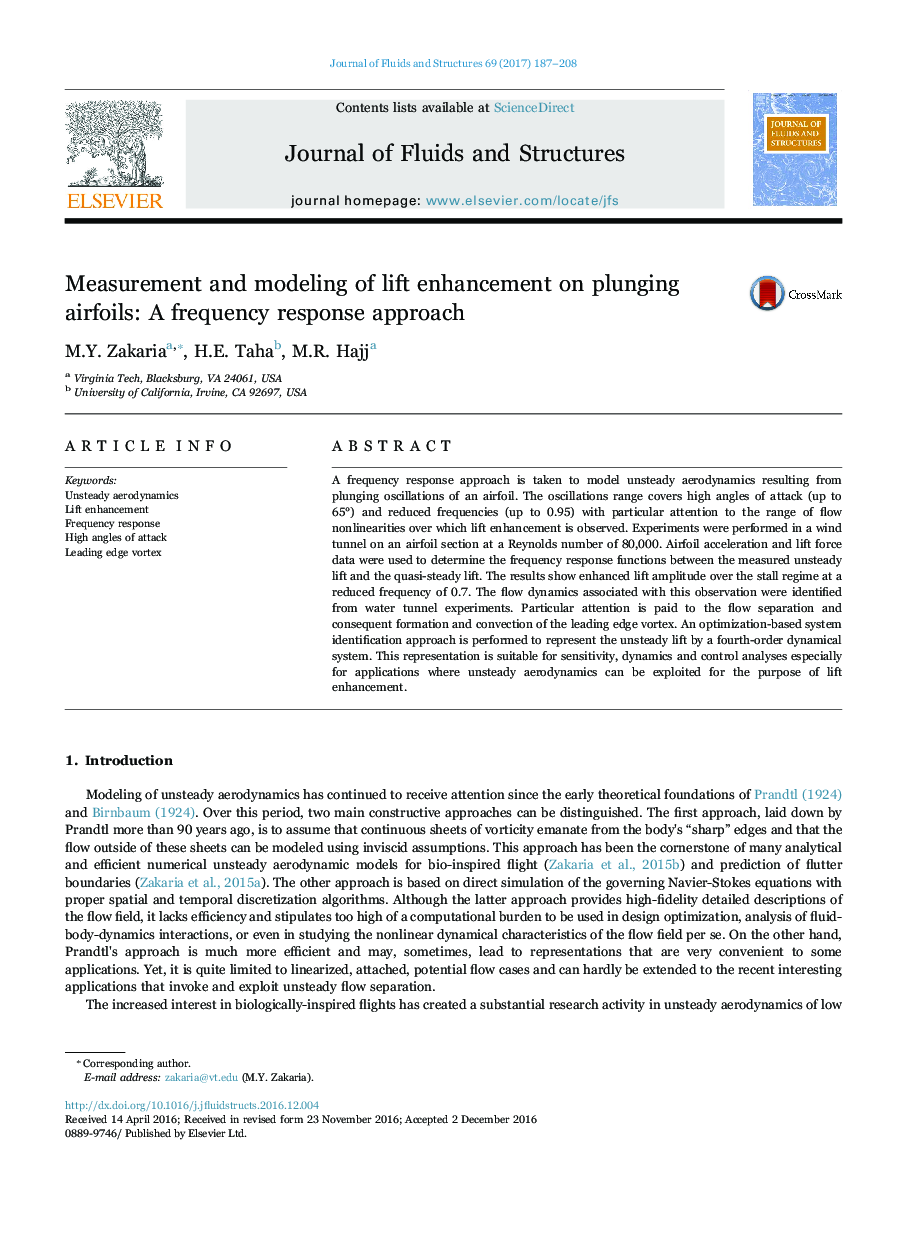| Article ID | Journal | Published Year | Pages | File Type |
|---|---|---|---|---|
| 5017488 | Journal of Fluids and Structures | 2017 | 22 Pages |
Abstract
A frequency response approach is taken to model unsteady aerodynamics resulting from plunging oscillations of an airfoil. The oscillations range covers high angles of attack (up to 65°) and reduced frequencies (up to 0.95) with particular attention to the range of flow nonlinearities over which lift enhancement is observed. Experiments were performed in a wind tunnel on an airfoil section at a Reynolds number of 80,000. Airfoil acceleration and lift force data were used to determine the frequency response functions between the measured unsteady lift and the quasi-steady lift. The results show enhanced lift amplitude over the stall regime at a reduced frequency of 0.7. The flow dynamics associated with this observation were identified from water tunnel experiments. Particular attention is paid to the flow separation and consequent formation and convection of the leading edge vortex. An optimization-based system identification approach is performed to represent the unsteady lift by a fourth-order dynamical system. This representation is suitable for sensitivity, dynamics and control analyses especially for applications where unsteady aerodynamics can be exploited for the purpose of lift enhancement.
Related Topics
Physical Sciences and Engineering
Engineering
Mechanical Engineering
Authors
M.Y. Zakaria, H.E. Taha, M.R. Hajj,
